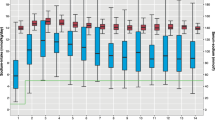Abstract
Fluid and electrolyte management in the very low birth weight infant is critical to survival. The amount of fluid present in the plasma, interstitial fluid, and cellular fluid changes throughout the fetal and neonatal period, presenting a challenging situation. One of the many factors influencing fluid requirements is the insensible water loss by mechanisms such as evaporation. Low birth weight infants are especially susceptible to this due to their large body surface area and immature skin, often resulting in hypernatremia and the complications associated with it. However, some infants may experience hyperkalemia, hyperglycemia, and/or hyponatremia, resulting in various other complications. Careful monitoring is essential in deciding how to manage these infants. This article aims to discuss the management of fluid and electrolytes in very low birth weight infants and address ways to decrease the morbidity and mortality associated with the imbalances in fluid and electrolytes seen in this population.
This is a preview of subscription content, access via your institution
Access options
Subscribe to this journal
Receive 12 print issues and online access
$259.00 per year
only $21.58 per issue
Buy this article
- Purchase on Springer Link
- Instant access to full article PDF
Prices may be subject to local taxes which are calculated during checkout
Similar content being viewed by others
References
Friis-Hansen B . Body water compartments in children: changes during growth and related changes in body composition. Pediatrics 1961; 28: 169–181.
Harding R . Fetal lung fluid. In: Brace RA, Ross MG, Robillard JE (eds). Fetal and Neonatal Body Fluids: The Scientific Basis for Clinical Practice. Perinatology Press: New York, 1989, pp 41–64.
Maloney JE . Preparation of the respiratory system for the early neonatal period. J Dev Physiol 1984; 6: 21–30.
Kitterman JA, Ballard PL, Clements JA, Mescher EJ, Tooley WH . Tracheal fluid in fetal lambs: spontaneous decrease prior to birth. J Appl Physiol 1979; 47: 985–989.
Bland RD, McMillan DD, Bressack MA, Dong L . Clearance of liquid from lungs of newborn rabbits. J Appl Physiol 1980; 49: 171–177.
Perks AM, Cassin S . The effects of arginine vasopressin and other factors on the production of lung fluid in fetal goats. Chest 1982; 81S: 63S–65S.
Comline RS, Silver M . The composition of foetal and maternal blood during parturition in the ewe. J Physiol 1972; 222: 233–256.
Linderkamp O . Placental transfusion: determinants and effects. Clin Perinatol 1982; 9: 559–592.
Oh W, Blankenship W, Lind J . Further study of neonatal blood volume in relation to placental transfusion. Ann Pediatr 1966; 207: 147–159.
Loren JM, Kleinman LI, Ahmed G, Markarian K . Phases of fluid and electrolyte homeostasis in the extremely low birth weight infant. Pediatrics 1995; 96: 484–489.
Schaffer SG, Meade V . Sodium balance and extracellular volume regulation in very low birth weight infants. J Pediatr 1989; 115: 285–290.
Hartnoll G, Betremieux P, Modi N . Randomised controlled trial of postnatal sodium supplementation on oxygen dependency and body weight in 25–30 week gestational age infants. Arch Dis Child Fetal Neonatal Ed 2000; 82: F19–F23.
Costarino AT, Gruskay JA, Corcoran L, Polin RA, Baumgart S . Sodium restriction versus daily maintenance replacement in very low birth weight neonates: a randomized, blind therapeutic trial. J Pediatr 1992; 120: 99–106.
Rutter N, Hull D . Water loss from the skin of term and preterm babies. Arch Dis Child 1979; 54: 858–868.
Costarino AT, Baumgart S . Modern fluid and electrolyte management of the critically ill premature infant. Ped Clin North Am 1986; 33: 153–178.
Parish A, Bhatia J . Nutritional considerations in the intensive care unit: neonatal issues. In: Shikora SA, Martindale RG, Schwaitzberg SD (eds). Nutritional Considerations in the Intensive Care Unit – Science, Rationale and Practice. Kendall/Hunt: Iowa, 2002, pp 297–309.
Baumgart S, Langman CB, Sosulski R, Fox WW, Polin RA . Fluid, electrolyte, and glucose maintenance in the very low birth weight infant. Clin Pediatr 1982; 21: 199–206.
Baumgart S, Costarino AT . Water and electrolyte metabolism of the micropremie. Clin Perinatol 2000; 27: 131–146.
Bartley JH, Nagy S, Frank M, Bhatia J . Inadvertent sodium load in the first 5 days of life in extremely low birth weight infants. J Perinatol 2004; 24: 593.
Bell EF, Warburton D, Stonestreet BS, Oh W . Effect of fluid administration on the development of symptomatic patent ductus arteriosus and congestive heart failure in premature infants. N Eng J Med 1980; 302: 598–604.
Van Marter LJ, Pagano M, Allred EN, Leviton A, Kuban KC . Rate of bronchopulmonary dysplasia as a function of neonatal intensive care practices. J Pediatr 1992; 120: 938–946.
Spahr RC, Klein AM, Brown DR, Holzman IR, MacDonald HM . Fluid administration and bronchopulmonary dysplasia. Am J Dis Child 1980; 134: 958–960.
Davis ID, Avner ED . Fluid and electrolyte management. In: Fanaraff AA, Martin RJ (eds). Neonatal-Perinatal Medicine: Diseases of the Fetus and Infant, 7th edn, Mosby: Missouri, 2002, pp 619–627.
Author information
Authors and Affiliations
Corresponding author
Rights and permissions
About this article
Cite this article
Bhatia, J. Fluid and electrolyte management in the very low birth weight neonate. J Perinatol 26 (Suppl 1), S19–S21 (2006). https://doi.org/10.1038/sj.jp.7211466
Published:
Issue Date:
DOI: https://doi.org/10.1038/sj.jp.7211466
Keywords
This article is cited by
-
Global variation in skin injures and skincare practices in extremely preterm infants
World Journal of Pediatrics (2023)
-
Survival status and predictors of mortality among preterm neonates admitted to neonatal intensive care unit of Addis Ababa public hospitals, Ethiopia, 2021. A prospective cohort study
BMC Pediatrics (2022)
-
Renal versus cerebral saturation trajectories: the perinatal transition in preterm neonates
Pediatric Research (2022)
-
Urine Specific Gravity Measurement for Fluid Balance in Neonates on Intravenous Fluids in a Neonatal Intensive Care Unit: An Open Label Randomized Controlled Trial
Indian Pediatrics (2022)
-
Individualized fluid management in extremely preterm neonates to ensure adequate diuresis without increasing complications
Journal of Perinatology (2021)



